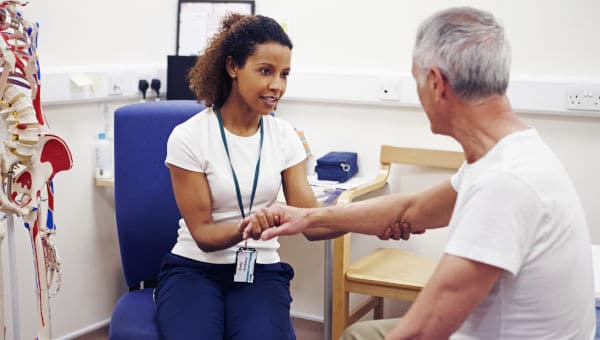Blog

Needle Hesitancy: Here we are. Now what?
Published by paincare on
Apr 22, 2021 11:30:56 AM
As supply for COVID19 vaccination in the US begins to outstrip demand, the impact of antivax sentiment is becoming evident. The associations with politics, socioeconomic status and education, however, miss the biggest – and PROVEN – cause of antivax sentiment. Needle hesitancy.
In “The Big Chill”, Jeff Goldblum notes “when was the last time you tried to get through the day without two to three juicy rationalizations?” People old enough to have seen this movie most likely aren’t anti-vax. We Gen-X folk were born before kids were routinely given boosters at an age when it could be traumatizing. We dismiss needle fear because we don’t remember vaccines, only the rare Bicillin shot for strep, and assume we’re morally superior because we’re tough. But because society values toughness, if you ARE afraid of needles, you’re 3x more likely to decide that perhaps your fear is really because the vaccine is dangerous. A rationalization is much easier than being stigmatized.
Anna Taddio was the first to publish that of the 23% of adults who feared needles, 7% said they wouldn’t vaccinate their children because of it. Around the same time, our team researching the Buzzy device for needle pain discovered that the reason for the 3x jump in needle fear was related to the preschool booster experience… and persisted through adolescence at least, impacting HPV adherence.
We found in part of the analysis that kids who got one injection only every time they went to the MD after age 4 did not have needle fear as teenagers. I do think one at a time builds resilience, kids shake it off, while relentless 3-5 injections at the same time is even hard for an adult. It became clear that when these kids were old enough to drive themselves to the doctor… they wouldn’t.
When I became aware of this impending noncompliance tsunami, I tried to make people aware, initially not even discussing in my paper that perhaps using pain control for these booster shots was an answer. I did a TEDx talk. I cornered Paul Offit, god of vaccinations, at AAP book signings, challenging his contention that “getting them all over with at once is less traumatic.” Where is there data supporting it? Any noncompliance study that doesn’t mention needle fear DIDN’T ASK. Those that do find it is the most compelling reason teens don’t get vaccinated.
My biggest frustration is that because I became aware of the needle hesitancy epidemic as part of developing a product, everyone assumes that my interest is economic. Because we stubbornly made Buzzy reusable and people share it, there isn’t recurring revenue: we can’t stay afloat on Buzzy vaccine business. Nonetheless, it m
There is great PTSD in children literature that shows that parents’ attitudes dramatically shape the response to the trauma, so warm firm “yeah, that’s hard but it’s almost over” and involving the parent in the vaccine support help. “Give parents a job” I always say, because a crying empathizing parent makes the experience then and the trauma later worse.
Until we live in an ideal world where we can use painless microneedles to vaccinate, I would
a) limit the same day injections to two (ideally 1) given NOT in the exam room, but a prize/procedure room. Consider letting kids get as many prizes as they got shots that day.
b) let pharmacies give injections, as well as schools, so the experiences aren’t tied to healthcare.
c) have parents use DistrACTION cards with preschoolers as the injections are being given
d) let a child play with and choose whether to use Buzzy, Buzzy with ice wings, or not
e) obvious stuff like position of comfort
Since my 2017 article some pediatricians have told me they’re limiting the injections at age 4-6, and it makes the subsequent flu shot clinics SO much easier. Truth is ultimately coercive… what works, wins. The clear impact this has on a world that can’t clear pandemics due to vaccine hesitancy may lead to change. For now, I think I’ve put out the limit of what I can while I’m still CEO of a company that addresses the problem. Adapting and proving our pain-reducing platform to supplant opioid overprescription is where I feel I can best contribute, and working with our all woman company to continue providing the most proven device for injection fainting, pain, and fear. Buzzy Helps.
Tags:
Health & Wellness